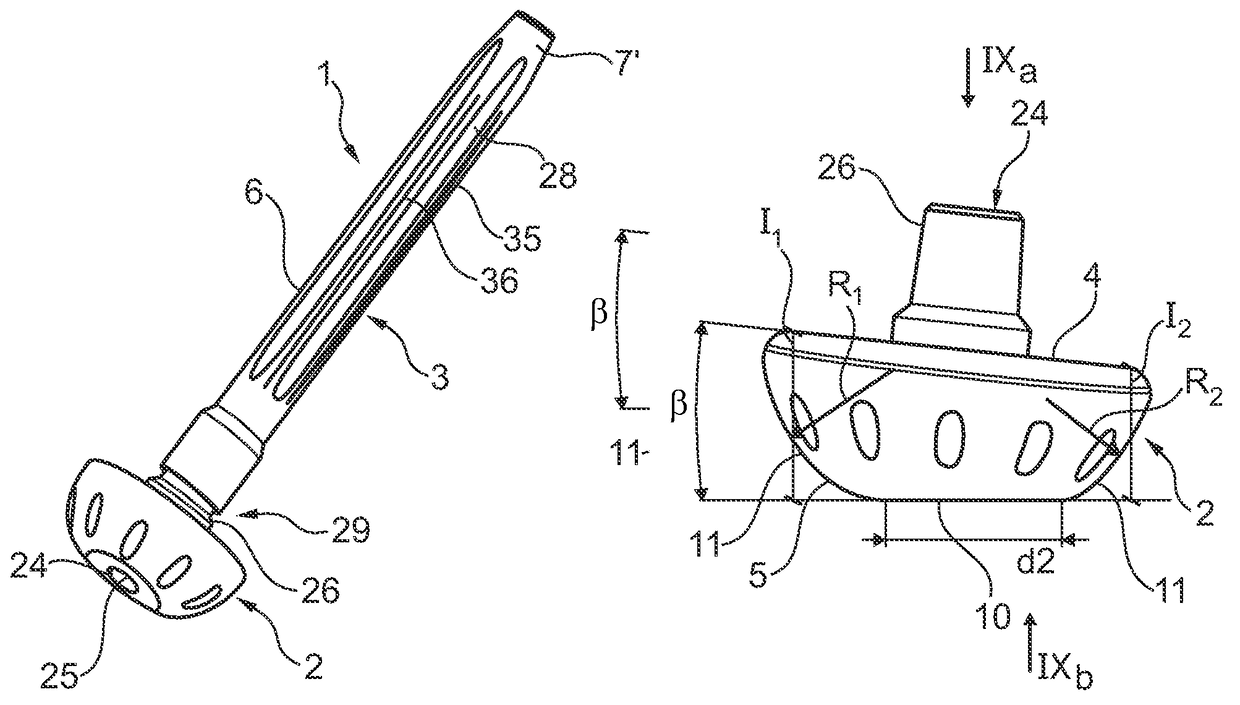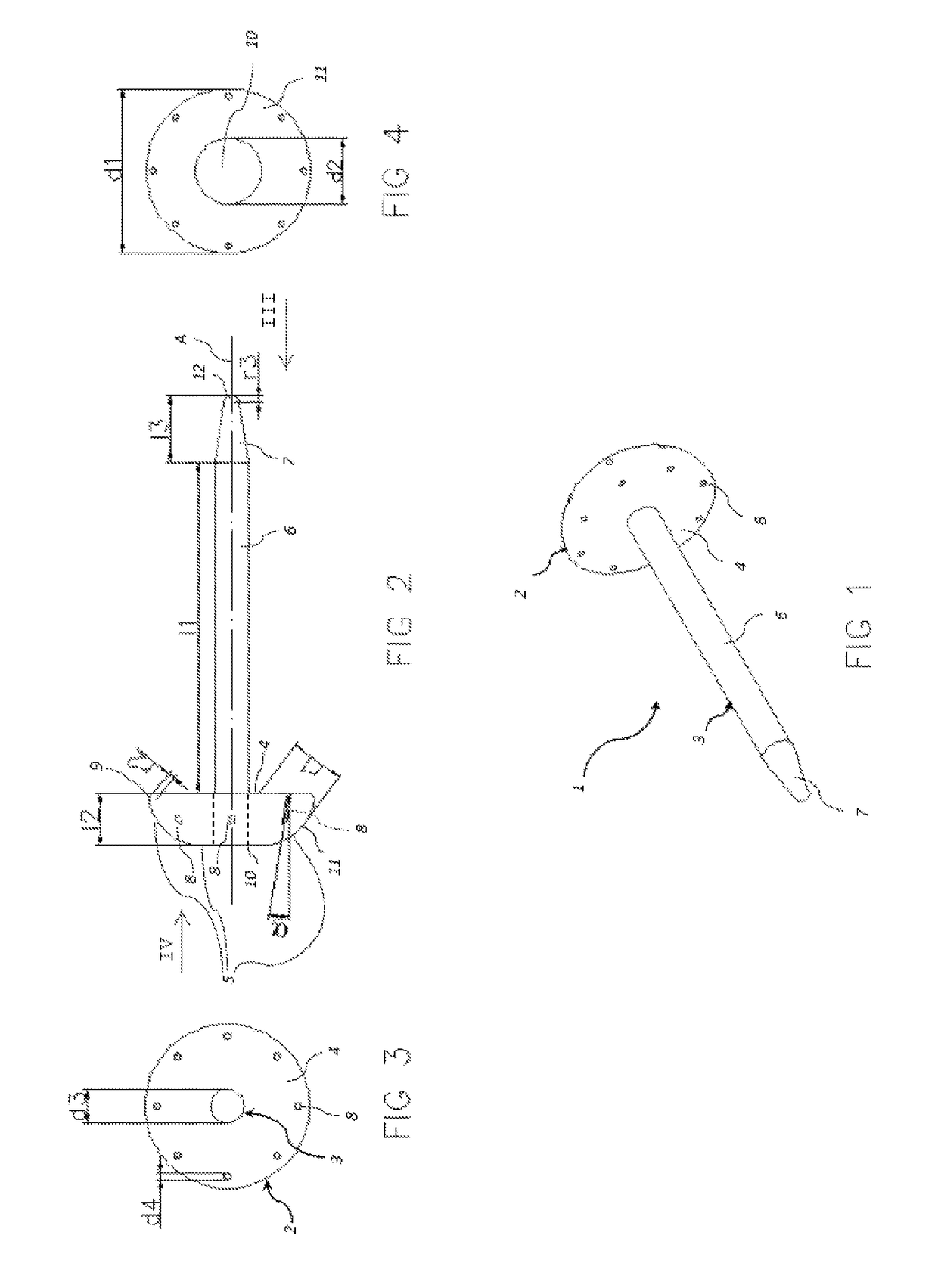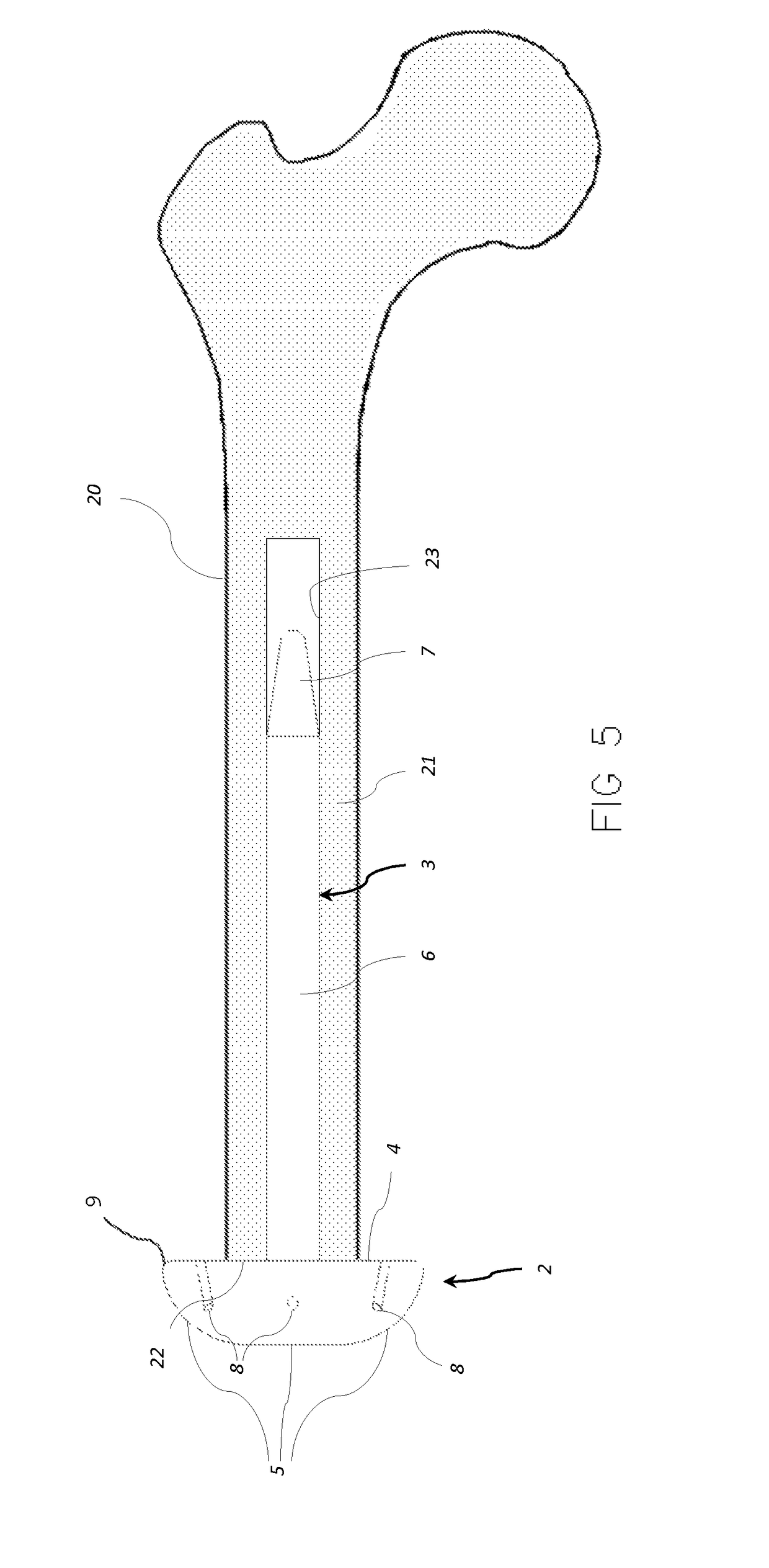Implant for lower limb amputation
a technology for amputation stumps and implants, applied in the field of implants for distal load bearings, can solve the problems of inability to perform gritti-stokes amputation techniques, risk of infection, and small distal bony area to allow end bearings, so as to improve the load bearing capacity of the amputation stumps
- Summary
- Abstract
- Description
- Claims
- Application Information
AI Technical Summary
Benefits of technology
Problems solved by technology
Method used
Image
Examples
Embodiment Construction
[0048]Referring to the figures, an implant 1 for transfemoral or transtibial amputation is shown, comprising a base 2 and a stem 3 configured to be inserted in a medullary canal 23 of an amputated femur bone, and in a variant, in the medullary canal of an amputated tibia bone. The use of the implant according to this invention is most advantageous for transfemoral amputations, however the advantages it confers are also useful for transtibial amputations. For simplicity, the invention embodiments will be described in relation to the amputation of the femur bone, being understood that the invention may also be used in the case of a transtibial amputation with the same features except for dimensional and angular adjustments taking into account the different anatomy of the above knee and below knee parts and bones of a person's leg.
[0049]The stem 3 is rigidly connected to, and extends from, the base 2. The stem is manufactured as a separate part configured to be assembled to the base an...
PUM
 Login to View More
Login to View More Abstract
Description
Claims
Application Information
 Login to View More
Login to View More - R&D
- Intellectual Property
- Life Sciences
- Materials
- Tech Scout
- Unparalleled Data Quality
- Higher Quality Content
- 60% Fewer Hallucinations
Browse by: Latest US Patents, China's latest patents, Technical Efficacy Thesaurus, Application Domain, Technology Topic, Popular Technical Reports.
© 2025 PatSnap. All rights reserved.Legal|Privacy policy|Modern Slavery Act Transparency Statement|Sitemap|About US| Contact US: help@patsnap.com



